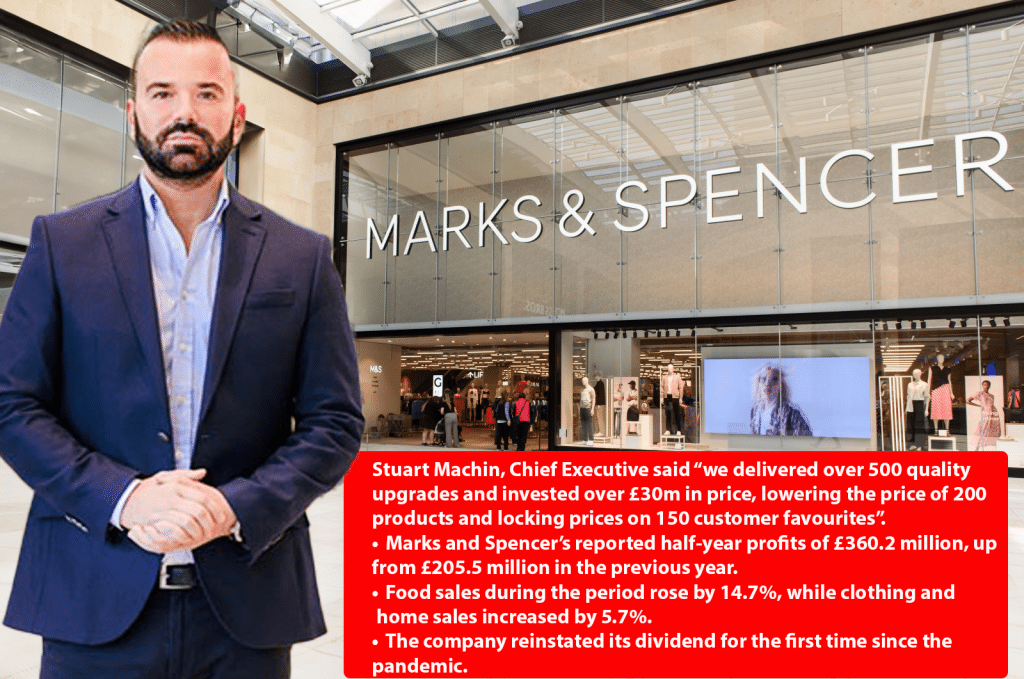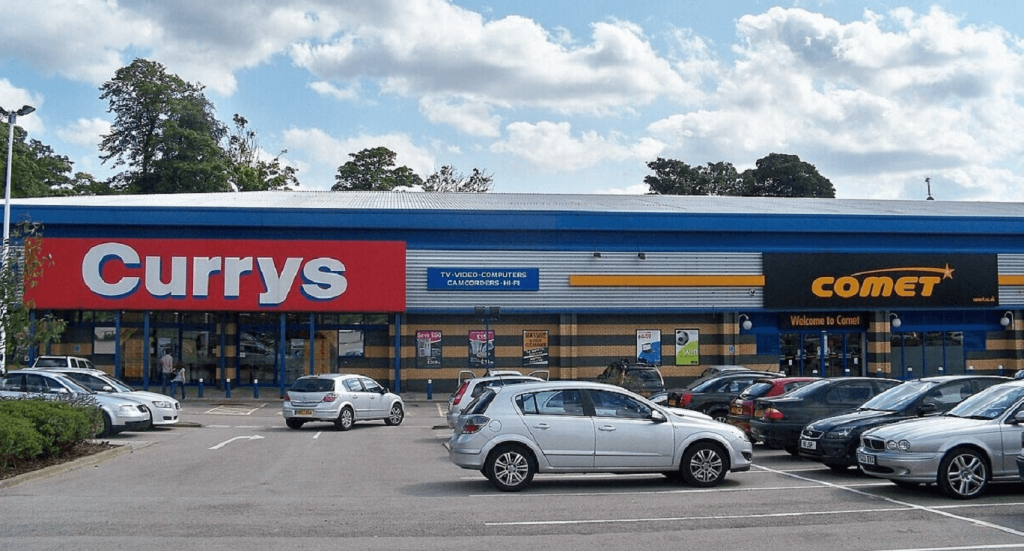Marks and Spencer’s remarkable ascent has sent shockwaves through the retail realm. The renowned British retailer revealed a stunning pretax profit of £360.2 million for the half-year ending in September, soaring past last year’s £205.5 million. City forecasts, which had settled around £275 million, were left in the dust. In this unprecedented turnaround, food sales surged by 14.7%, with a robust 11.7% growth on a like-for-like basis—stripping out the effects of store changes.
Clothing and home sales displayed similar resilience, escalating by 5.7% and 5.5% on a like-for-like basis. Notably, Marks and Spencer has rekindled hope by reinstating dividends for the first time since the pandemic struck.
Marks and Spencer’s prowess extends beyond the balance sheet. The brand’s strategic foray into the retail landscape has been nothing short of awe-inspiring. The opening of new stores, such as the one in Liverpool, showcases a 30% reduction in space for clothing and home. Yet, profits and sales defy the odds by surging.
This revival isn’t confined to the headlines; it’s resonating with consumers. Marks and Spencer is aligning with customer needs and preferences, solidifying its relevance in the market. It’s a refreshing change from the numerous stories of recovery that often fail to translate to real-world impact.
While competitors grapple with challenges, Marks and Spencer is charting its destiny. Its focus on food and value messaging has borne fruit, attracting consumers seeking more than just convenience. The market share figures, notably in women’s clothing, underscore their resurgence.
Moreover, Marks and Spencer’s strategic acquisition of Gist, a distribution business, is already bearing fruit. This move not only eliminates third-party arrangements but also streamlines distribution logistics, making it remarkably efficient.
Nonetheless, amid the triumphs, the one caveat is Picardo, the retail sector’s underperformer. Despite considerable investments, results remain sluggish. Yet, latent opportunities are on the horizon, and Marks and Spencer is poised to capitalize by gaining more control and aligning with evolving consumer preferences.
While cautious in their statements, Marks and Spencer’s future appears promising. The second half anticipates further profits, potentially surpassing expectations by £25-30 million. It’s a bold prediction, but with the wind at their backs, Marks and Spencer seems well-equipped to deliver.
In conclusion, Marks and Spencer’s resurgence isn’t just a story for shareholders—it’s a testament to reinvention and resilience. As the retail industry evolves, this iconic brand stands tall, making it essential reading for anyone interested in the future of retail.



